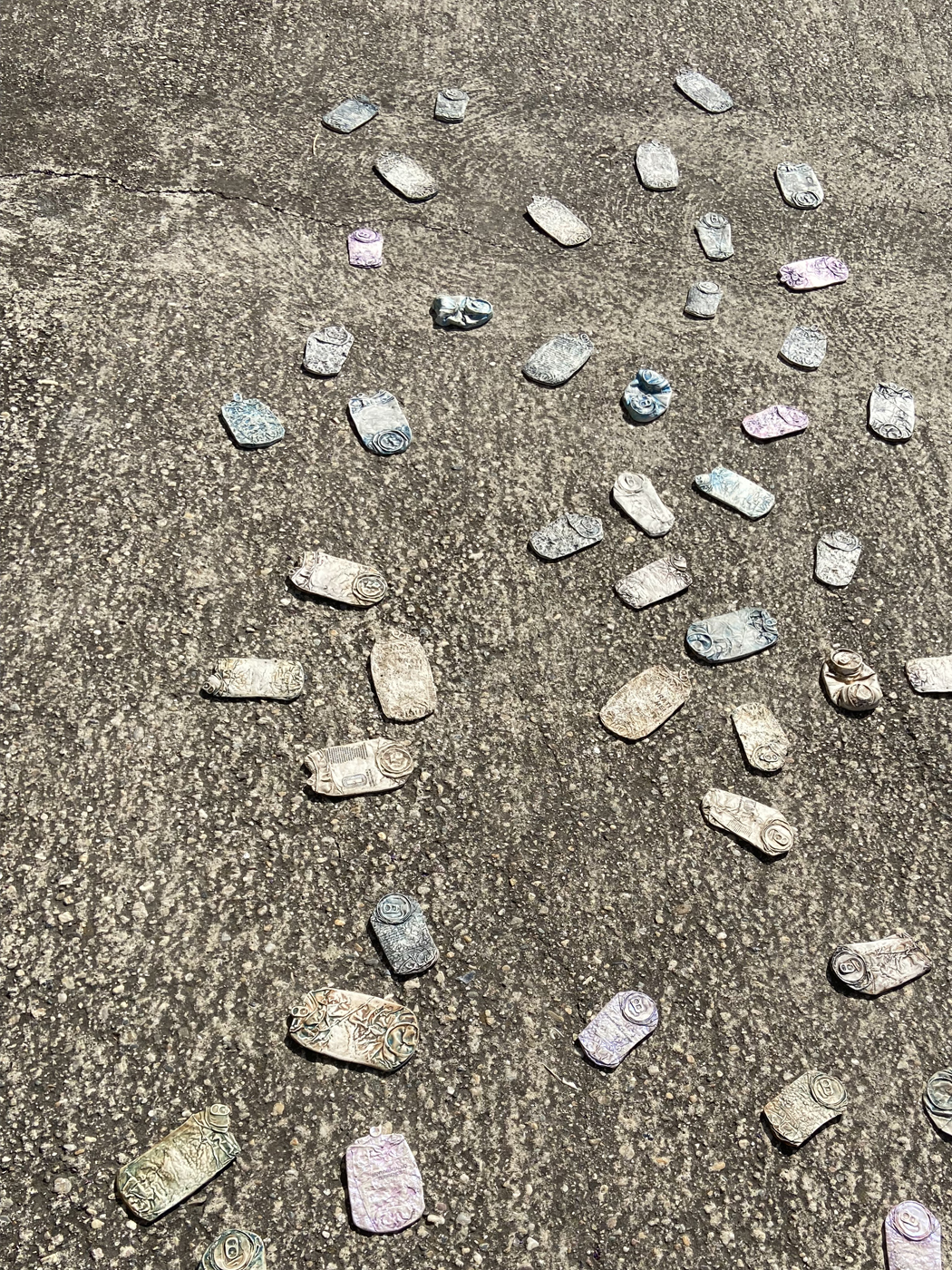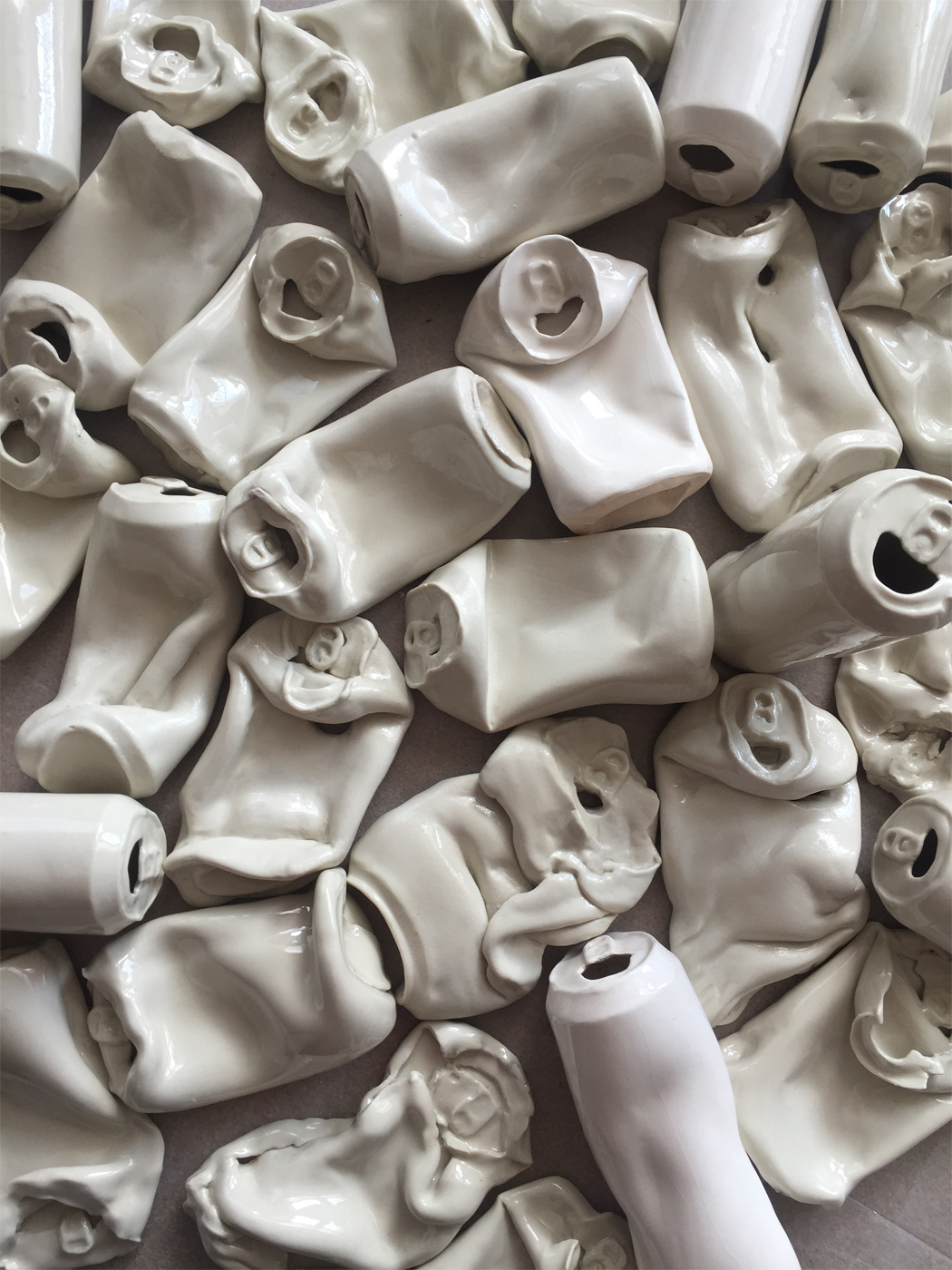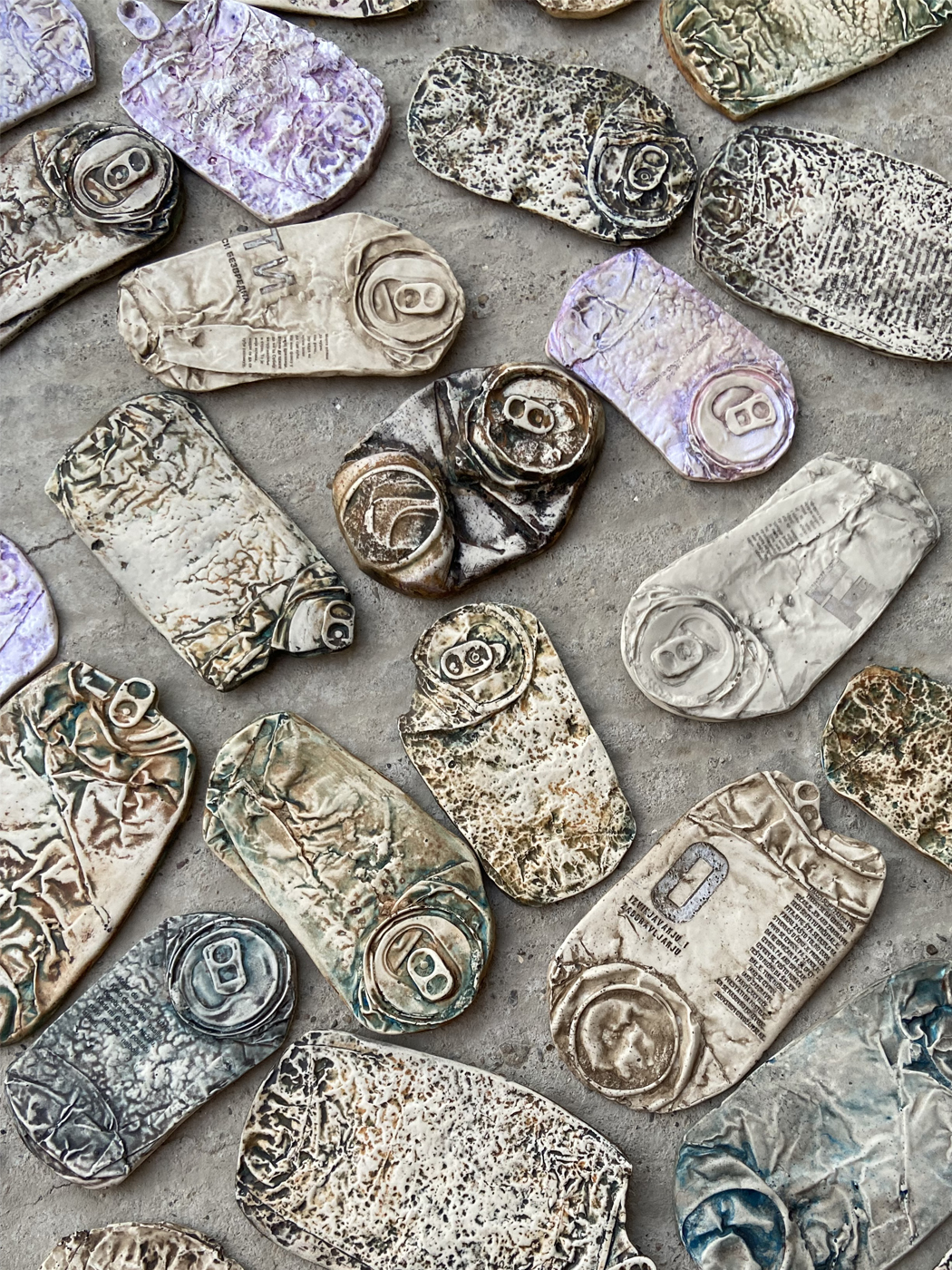Katarina Popović
Year of birth: 1996
Where do you live: Belgrad, Serbia
Your education: Faculty of Applied Arts in Belgrade and I spent part of my studies at the Academy of Fine Arts “Jan Matejko” in Krakow, Poland and soon I will defend my doctoral in art project.
Website | Instagram

Your art often centers on worn-out or destroyed objects. What drew you to this theme initially?
It was simply the way I felt. I felt so demolished and didn’t know how to start my career when studies were over, which is completely normal and that’s what drew me to this theme. To start life outside the system in which you were trapped before means to let go of that past and build something new. To start over and make any change in life takes time and a lot of effort and sometimes it’s even painful. And that’s how my work became a bridge between the past and the future.
Can you tell us more about the specific event or location that inspired your current series with porcelain cans?
Here you can see two types of porcelain cans. Slightly deformed ones depict the inner landscape. When the harmony between me and people that I respect and care for is disturbed I feel so sick. I simply wanted to show that unpleasant feeling from the stomach. Empty can completely white, with no brand, no text, crushed a little and left on a table alone for me was just that, that feeling transferred on an object, incredible.
Thin flat porcelain sculptures are made more spontaneous. I was walking to my studio which was located in an old paper factory building called Jugošped in Belgrade. That building had a huge parking lot, also it was a place where people were gathering and leaving trash behind, while cars were passing nonstop and crashing those leftovers. By looking at the floor I was impressed how a can can become thin like paper, so I collected a few. While transferring it to a porcelain I wanted to highlight the texture, without brands, without story, just pure material and its remains. But that work became a good base for storytelling painful stories not just personal, but more important collective ones which each one of us from the same country face daily and even for years.
It is normal for works of art to reflect the society we live in. Reality hurts sometimes, and it’s even more painful having a country that you love so much, but cannot rely on it. Sadly, the people of Serbia live in a system that tramples on and humiliates its citizens by disrespecting both the living and the dead with continuous ongoing actions, as we are currently facing a major social crisis and threatening ecological catastrophe caused by corruption when the concrete canopy of the renovated main railway station in Novi Sad, Serbia on 1. November 2024. collapsed onto the busy pavement below killing 16 people and strategic lithium mining on our territory causing irreversible consequences for nature and domestic people. Faculties have been in blockades for more than six months now and all around the country are protests. Though this work was created before mentioned events it depicts the atmosphere we lived in for so long with these events as culmination and now the main question is are we going to lose everything and witness the total destruction of nature, institutions, all the people and entire nation or this is just a turning point for the brighter future. Well… the time will tell the answers, but till then these objects will stay capturing the feelings of occupation, neglect, the power of disrespect and destruction that are shaping our bodies and souls in this kind of environment. I’m not the only one feeling the way I feel and that’s certain. The repetition of the same motif shows the massive presence of this condition.

Katarina Popović | Porcelain cans installation | 2024
Why did you choose porcelain as the material to recreate these crushed cans—objects typically seen as disposable?
You probably heard this many times that clay remembers and has a memory, same is with our bodies, so I wanted to emphasize that. I wanted to make something like a long lasting graveyard of memories with dominant white color, so porcelain was a perfect fit. The mix of luxury material and the garbage as a motif is that confrontation I was looking for. White color in my previous work was present as a symbol of washout feelings and a lack of joy.
How do you balance restoration and destruction in your creative practice, given your background in conservation?
I never did conservation in my life, only studied it. In Poland I did great conservation work but as a student, never as a professional. So destruction is already there, having a skill and diploma but no chances to really work in the field you’re really well prepared for is painful and discouraging. So conservation as my background is something only playing in my “background”.

Katarina Popović | Porcelain cans installation | 2024
What kind of emotional or social responses do you hope your installations evoke in viewers?
I like to see various reactions. For me this represents something for someone else can be something completely different and that’s the beauty of art. At my exhibitions I saw kids laughing, people curiously stopping by the gallery window, some even ended up crying. If you search more about this motif in porcelain you will find different artists doing similar, but in a different context, even recently I got one porcelain can straight from the flea market. When it comes to globally spread motifs the story and history of an object can be truly fascinating.
How does your work comment on consumer culture and collective memory?
I feel too small to comment on consumer’s culture and its relation to collective memory, each system has its pros and cons, but not everything can be replaced and easily disposed of. Processing memories and materials takes time.

Katarina Popović | Porcelain cans installation | 2024
Do you see your art as a form of preservation or a kind of visual archaeology?
I wanted to address emotional responses to past circumstances that influence our future so much, maybe it’s more kind of a visual archeology. Artworks are a reflection of a time, place and environment we live in so this can also be a preservation of ongoing times which are not so bright. If you just search online a little about the ecological challenges that my country is facing right now, there is a real chance that this work will become a souvenir of a country that once upon a time existed. Thin cans are a symbol of pressure, disrespect, staying in the same place for a long time with no movement, no chance, but waiting for more destruction. This work is simply embodiment of a strong personal feeling but it truly and unintentionally follows an ongoing situation in my country.

Leave a Reply